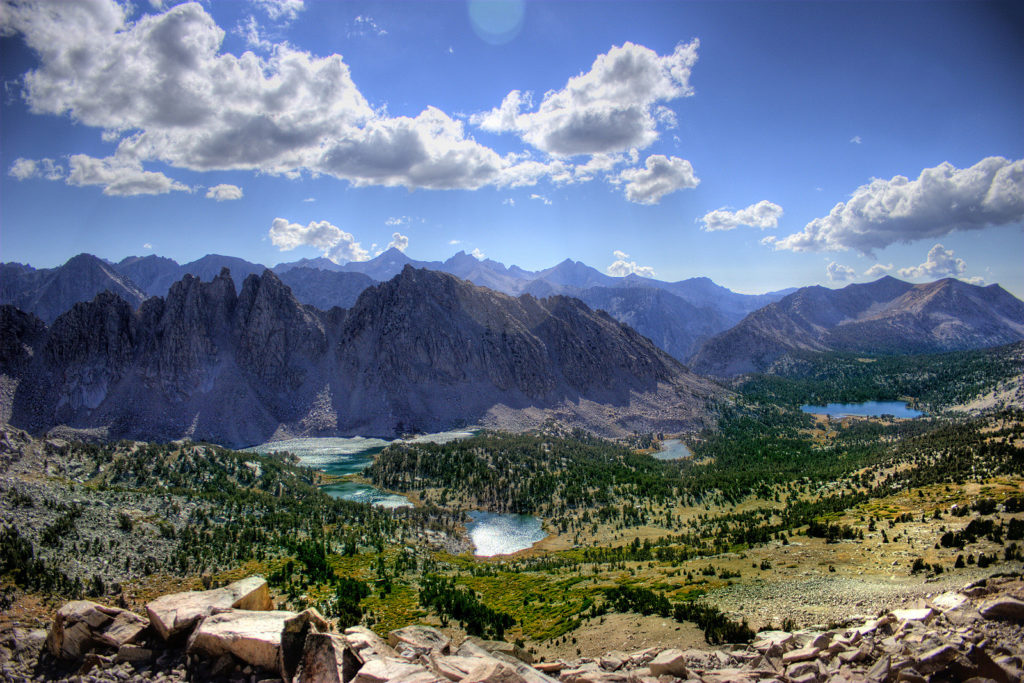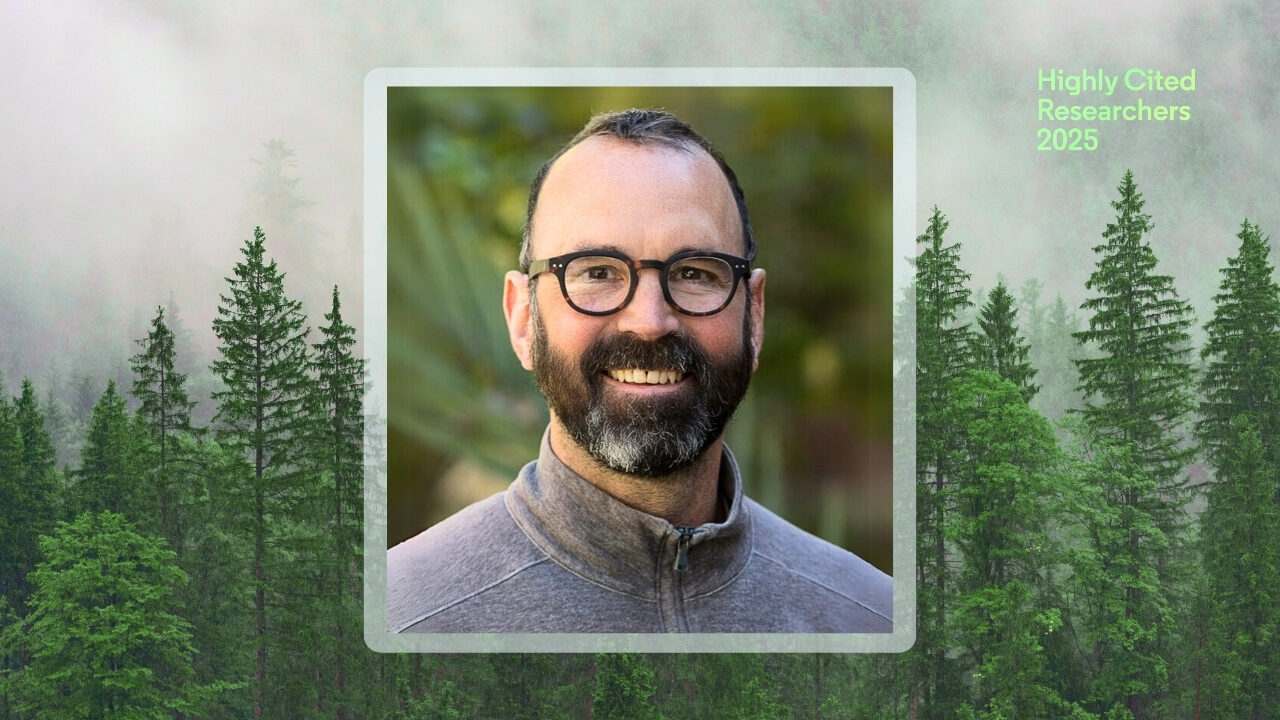
New report on climate change in the Sierra Nevada shows need for human adaptation
The range contains the highest point in the continental United States, Mount Whitney, and is home to both the oldest and largest trees in the world — as well as…
The Sierra Nevada mountain range looms over California, stretching 400 miles from Oregon to Tehachapi Pass in Kern County.
The range contains the highest point in the continental United States, Mount Whitney, and is home to both the oldest and largest trees in the world — as well as diverse wildlife, from mountain lions to mosquitos.
The range also looms large in the lives of California’s 40 million residents. The food we grow and water we drink depends on the mountains and their effects on climate. That’s why researchers in UCLA’s Center for Climate Science spent the past three years projecting how climate change will affect the Sierra Nevada. On April 2, the final report was released.
The state’s climate is expected to change dramatically by the end of the century, presenting challenges to reduce carbon emissions and adapt to new climate realities.
“There is a lot of positive climate action in California to reduce greenhouse gas emissions,” said Alex Hall, director of the climate center and a professor with UCLA’s Institute of the Environment and Sustainability. “On adaptation planning, the state has shown strong leadership. I’m really encouraged by the openness of officials across the state to examine climate change impacts and plan for them.”
The report synthesizes a research effort that produced five academic publications, including papers on temperature, snowpack during drought and runoff timing. Here are some of the most critical findings, based on what the researchers expect by the end of the century if carbon emissions are not reduced significantly:
On warming:
- At middle elevations — 5,000 to 8,000 feet above sea level — temperatures could rise from 7 to 10 degrees Fahrenheit, in part because of the snow albedo feedback, in which melting snow reveals darker surfaces that absorb more heat, further amplifying warming.
- In foothills and valleys, temperatures would increase between 5 and 7 degrees.
On snowpack, which serves as a natural reservoir for the state’s water supply:
- More precipitation will fall as rain instead of snow, and snow will melt more rapidly.
- On average, snowpack across the entire Sierra on April 1 would be 64 percent less than it was when measured in the years 1981–2000.
On water resources:
- The midpoint of peak snowmelt and runoff would occur 50 days earlier, on average, than it did from 1981–2000.
- Because less water will be stored naturally as snow and will melt faster, it will be difficult to store using our current system of dams and reservoirs.
In a recent Los Angeles Times op-ed, Hall and climate center associate director Katharine Reich urged the state to prepare now. California currently relies on snowpack for 60 percent of its water supply. They said the state should perform a comprehensive assessment of current infrastructure to account for their projections. Hall and Reich suggest that increasing groundwater could provide one promising solution.
The final Sierra report also predicts greater snow losses during both drought years and very wet years. The findings suggest that longer, hotter dry seasons would follow the wet seasons, drying out plants that grew in those water-rich months and making record wildfires such as the state saw in 2017 more common. Extreme weather could also lead to additional challenges in flood control.
“There are all sorts of implications for human life and human property,” said Hall, who is a professor of atmospheric and oceanic sciences. “Dried out vegetation is much more accessible to fire and much more likely to lead to big fires. People living where urban areas meet wild areas will be more vulnerable.”
Many of these anticipated effects are already starting. Hall’s research team found that 2016–17 winter snowpack was about 20 percent smaller than it would have been without climate change that has already happened.
To mitigate the effects, people and systems need to adapt. With the loss of the snowpack, “we have an impending water crisis on our hands,” Hall said. “A place like Los Angeles should be thinking more about local resources to hedge against the increasing difficulty we’re going to have capturing and storing water from remote locations in the Sierra Nevada.”
Neil Berg, associate director of UCLA’s Center for Climate Science, was lead author of the study on snowpack during drought. He said the findings present an opportunity — by necessity — to change how Southern California gets water.
“Climate change gives us an opportunity to be reliant on local water,” Berg said. “There has to be significant adaptation to maintain the system that was built in the 20th century, or we have to think of a new system. The status quo simply cannot be maintained.”
The Sustainable LA Grand Challenge recently mapped out L.A.’s path to water independence. It will take increasing local supply by improving access to groundwater, capturing runoff and recycling more water, while reducing demand — wasting less and conserving more.
During the past two years, Hall has traveled the state to meet elected officials, representatives from water agencies and other decision-makers. This summer, he plans to lead a 1,000-mile bike ride that will raise funds for future climate research at UCLA. The ride presents Hall with an opportunity to interact with communities affected by climate change effects such as sea level rise, wildfires and mudslides.
“We want to do deeper engagement with stakeholders,” Hall said. “It’s not enough to write these papers, give lectures and talk to the press.”
The new report also suggests ways people can take action, by saving water and energy at home, using public transportation or simply having more conversations about climate change.
More research is needed, too. After a year of tragedy in northern and southern California, Hall’s center will focus next on wildfires: They are joining a $4 million UC Multicampus-National Lab Collaborative Research and Training Award to focus on the issue.
Though Hall is optimistic about the state’s ability to lead on emissions reduction and adapt to climate change, he said much remains to be done.
“The challenge now is to translate willpower into action and planning, and that requires thought and resources. That’s the next step.”
For further details and infographics, see the full study
TOP IMAGE: Kearsarge Lakes, Sequoia National Park. | Photo by Terabass/Wikimedia Commons.




